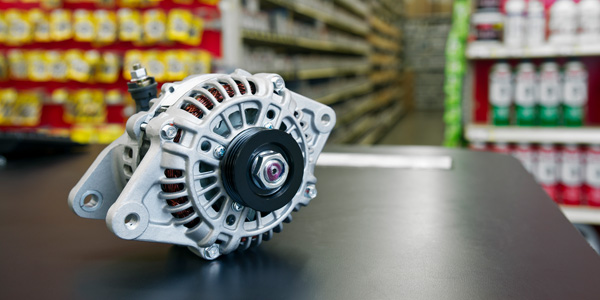
A commercial customer calls and tells you he just installed a new alternator – a unit you sold him – and it’s not working.
You politely inform him that before the store delivered the alternator to his shop, you checked the unit on a bench tester and it passed, which indicated it was working properly.
He responds: “I don’t care what your tester said. It’s not working on the car.”
What’s your next move?
Kevin Caswell, customer service manager for AmFor Electronics, has heard this scenario many times. In fact, when Caswell talked to Counterman about ways to reduce starter and alternator returns, he’d just wrapped up a call with a counter pro whose commercial customer wanted to send back an alternator that had passed the bench test.
Caswell’s advice? Tell the technician to install the alternator on the vehicle, with a fully charged battery. Start the vehicle and run it for about a minute. Then, hit the brakes and turn on the A/C, the windshield wipers or other accessories. Then, evaluate the alternator.
“Now you’ve induced load into the [charging] system, and it’s going to make the computer activate the alternator, change the regulator setpoint and make that charge,” Caswell explains. An alternator is “only going to work as hard as the vehicle tells it to.”
So, the counter pro took Caswell’s advice, and sure enough, called back to tell Caswell it worked.
As many as eight in 10 returns of starters and alternators turn out to be false failures, Caswell estimates, based on his feedback from manufacturers and distributors.
Usually, misdiagnosis is the culprit.
When it comes to reducing the number of unnecessary returns, the scenario described above points to the importance of understanding how alternators and starters work in modern vehicles.
“The physics of alternators and starters have not changed for many, many years,” Caswell explains. “However, the way they communicate with the vehicles is different. A lot of times, folks who are very cognizant of how an alternator or starter works presume the thing is bad when, in fact, the unit is fine but the communications with the vehicle are screwed up.”
In previous articles, Counterman has recommended using bench testers to verify that starters and alternators are functioning properly when they go on the shelf and off the shelf. However, while a bench tester is a must-have for any parts store, simply having one doesn’t guarantee a store will cut down on its volume of warranty returns.
“Warranty returns are individual decisions based on the information at hand,” Caswell says. Plus, they’re usually “based on the presumption that the customer is always right.”
Caswell suggests having a system in place to help counter pros decide when they’ll accept returns and when they won’t. Some stores have a policy stating they don’t accept returns of electrical items.
Also, it’s important to verify that the tester is functioning properly. Most testers have a built-in self-diagnostic feature that only takes a few minutes to run.
Finally, do your due diligence when handling returns, and use your bench tester as a sales tool. To verify that a starter or alternator is good – whether it’s in a vehicle or on a bench tester – there needs to be a good ground, a good electrical connection, a good battery connection and a tight belt. When a unit passes a bench test but isn’t functioning in the vehicle, AmFor’s Model 897 tester can help the counter pro diagnose which of those four conditions weren’t met. The tester displays a checklist of other potential problems – such as battery corrosion, a bad cable, a worn belt or a burnt fuse.
Says Caswell: “Once they do their due diligence, the auto parts retailer has the components to help the customer fix the real problem.”







